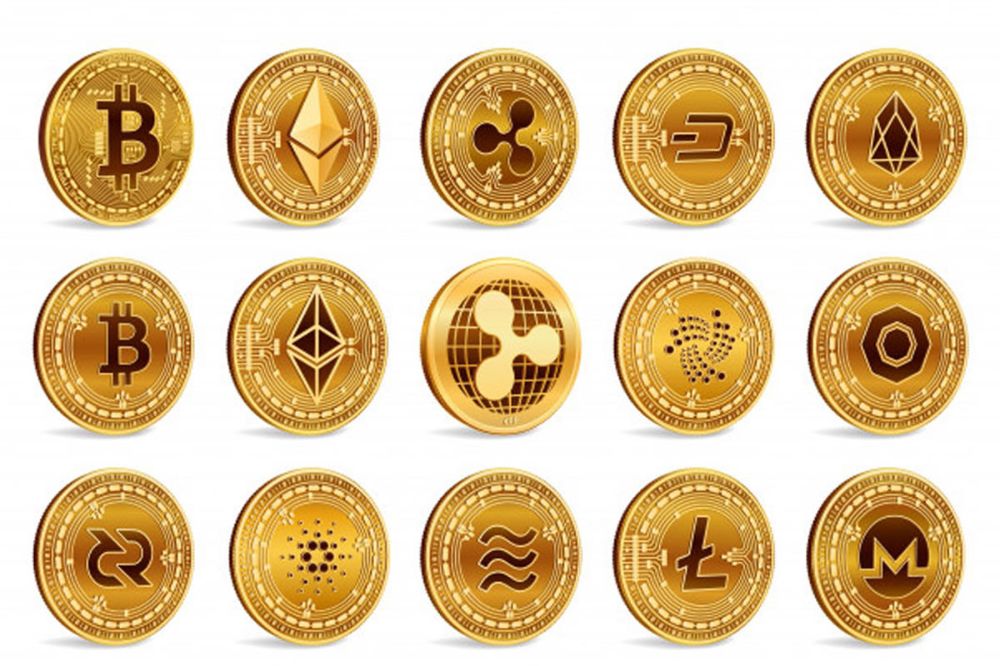Types of Cryptocurrencies: Altcoins and Their Differences with Bitcoin

Types of Cryptocurrencies: Altcoins and Their Differences with Bitcoin
Introduction
With the increasing adoption of cryptocurrencies, we are witnessing a wide variety of digital currencies, each introduced with unique purposes and features. Bitcoin, introduced as the first cryptocurrency in 2009 by Satoshi Nakamoto, has played the flagship role in the cryptocurrency market. However, Bitcoin was only the beginning of this new financial era, and since then, hundreds of other cryptocurrencies have emerged, which are known as Altcoins.
 Types of Cryptocurrencies
Types of Cryptocurrencies
Altcoins are designed to offer new features and benefits compared to Bitcoin. While Bitcoin is primarily known as a store of value and a medium of exchange, altcoins have attempted to solve issues such as transaction speed, scalability, and fees, and introduce new functionalities such as smart contracts and private transactions.
In this article, we will take a detailed look at altcoins and their differences with Bitcoin. First, we provide a definition of altcoins, then introduce and compare some well-known altcoins, and finally discuss the role and future of these currencies in the digital market.
Definition of Altcoins
Altcoin is a combination of the words Alternative and Coin, meaning “alternative coins” to Bitcoin. Any digital currency that entered the market after Bitcoin is referred to as an altcoin. The first altcoins emerged in the early 2011 with the goal of providing an improved version of Bitcoin or addressing specific limitations of that currency. Each altcoin usually has its own unique features and protocols, which may differ in aspects such as transaction processing time, mining algorithm, and privacy.
Altcoins are categorized into several main types:
- Mining-based Altcoins: These altcoins, like Bitcoin, use the mining process for transaction validation. Ethereum is an example of such a currency that, in addition to mining, offers extra features like smart contracts.
- Stablecoins: This category of altcoins is designed to reduce the high volatility of the cryptocurrency market and is typically pegged to a stable asset such as the US dollar or gold. Tether (USDT) is an example of stablecoins.
- Security Tokens: These altcoins are defined as digital assets that represent ownership of a real asset or a financial contract.
- Utility Tokens: This type of token is designed to provide access to specific services or products within a blockchain platform. Ethereum and Binance Coin are well-known examples of this category.
Altcoins have entered the market in a vast array and each one attempts to meet the diverse needs of users or overcome the limitations of Bitcoin.
 Types of Cryptocurrencies
Types of Cryptocurrencies
Comparison of Popular Altcoins
Ethereum
Ethereum, introduced in 2015 by Vitalik Buterin, is recognized as one of the most famous altcoins and plays a prominent role in the cryptocurrency world. Unlike Bitcoin, which is mainly used as a store of value and medium of exchange, Ethereum focuses on smart contracts and decentralized applications (dApps). Ethereum’s smart contracts allow users to execute transactions and financial agreements automatically without intermediaries. This feature has led to its wide use in DeFi projects and other financial applications.
Ethereum also employs the Proof of Stake (PoS) algorithm, which differs from Bitcoin’s use of Proof of Work (PoW). In PoS, validators approve transactions based on the amount of cryptocurrency they hold and stake in the network, while PoW requires high computational power.
Ripple (XRP)
Ripple is a well-known altcoin introduced in 2012 with the aim of creating a fast and cost-effective payment system for international transactions. Unlike Bitcoin and Ethereum, which rely on mining, Ripple uses a consensus mechanism that does not require mining. This system allows Ripple transactions to be completed much faster and with lower fees. Ripple’s goal is to serve as a replacement for traditional banking systems in international transactions, making it particularly attractive to financial institutions.
Litecoin
Litecoin was created in 2011 by Charlie Lee, a former Google employee, as a faster and lighter version of Bitcoin. Litecoin uses the Scrypt algorithm instead of SHA-256, which makes mining faster and more accessible. Designed to enable quicker and lower-cost transactions than Bitcoin, Litecoin is often considered the silver to Bitcoin’s gold.
The Role of Altcoins in the Market
Altcoins have played an important role in the development and expansion of the cryptocurrency market. With the emergence of altcoins, the cryptocurrency market has evolved from being centered solely on Bitcoin to becoming a multidimensional market, offering diverse options for investors and users.
1. Investment Diversification
- With altcoins, investors have more options for diversifying their portfolios. While Bitcoin is primarily viewed as a store of value, altcoins provide opportunities for investment in various fields such as DeFi, international payments, and smart contracts.
 Types of Cryptocurrencies
Types of Cryptocurrencies
2. Broader Applications
- Many altcoins have been introduced to offer new functionalities to the market. For example, Ethereum enables the creation of innovative financial projects through its smart contracts and decentralized applications, contributing to the development of financial industries and technology, and driving numerous innovations.
3. Market Share
- Although Bitcoin still holds the largest market share, altcoins have captured a significant portion of the market in recent years. As the largest altcoin, Ethereum holds an important market share and many innovative projects are built on its network.
Applications of Altcoins
Due to the new features and capabilities they offer, altcoins have a wide range of applications in various fields. Some key applications of altcoins include:
1. Smart Contracts and dApps
- Ethereum and many other altcoins enable the creation of smart contracts and decentralized applications. These contracts execute automatically without intermediaries and are used in many areas such as real estate, insurance, and financial services.
2. Fast and Low-Cost Payments
- Currencies such as Ripple are recognized as solutions for reducing costs and increasing speed in international payments, making them particularly appealing to banks and financial institutions.
3. Privacy
- Some altcoins, like Monero and Zcash, focus on preserving user privacy and facilitate anonymous transactions, making them suitable for specific markets.
The Future of Altcoins
Altcoins will continue to play an important role in the future of the cryptocurrency market. With growing demand for further innovation in finance and technology, altcoins may serve as pioneers of transformation in this industry. However, challenges such as price volatility, public adoption, and legal issues remain and must be addressed.
Opportunities
- The development of smart contracts, DeFi, and decentralized applications can create new opportunities for investment and innovation through altcoins.
Challenges
- Many altcoins still face challenges such as extreme price volatility, lack of widespread public acceptance, and legal issues, which may affect their growth.
Conclusion
Altcoins have established their place in the cryptocurrency market by offering new features and applications. While Bitcoin remains the pioneering currency, altcoins play a significant role in driving new innovations and creating new opportunities in the financial sector. Ultimately, both types of digital currencies—Bitcoin and altcoins—complement each other and can collectively contribute to the growth of the cryptocurrency market.







